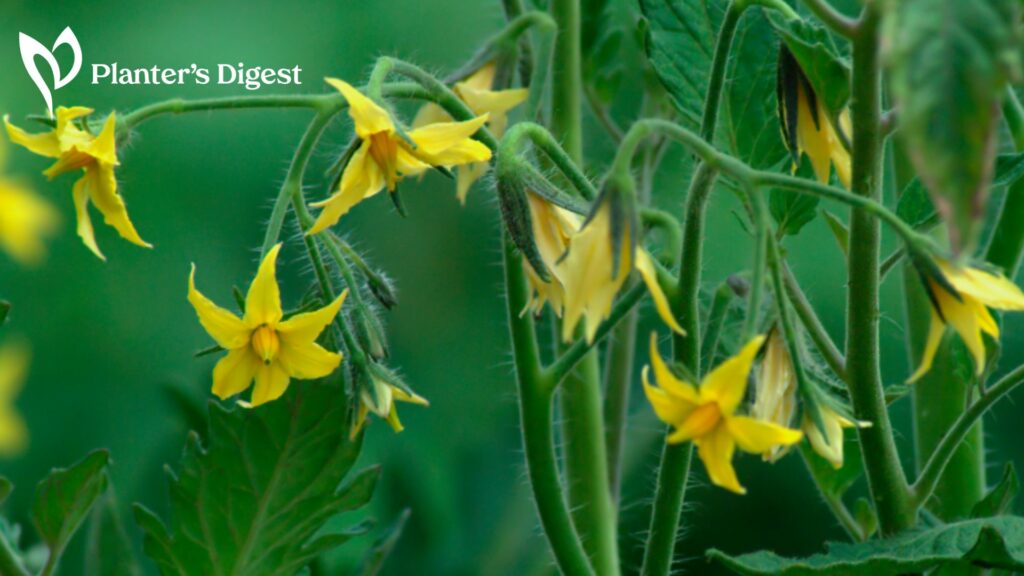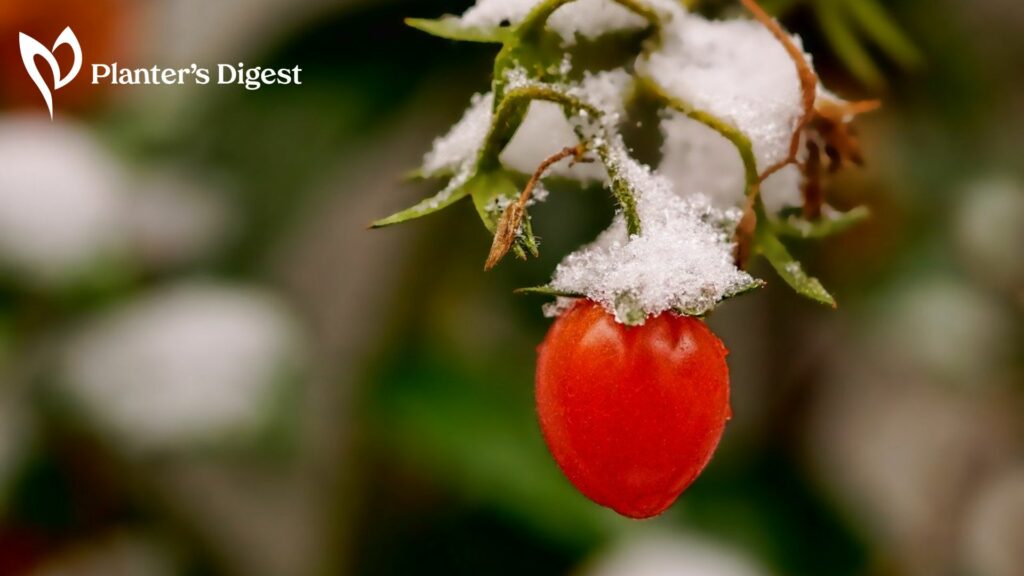
Growing tomatoes can be tricky, especially when the weather isn’t cooperating. As these are warm-season plants, we understand each gardener’s concern as temperatures begin to drop.
Don’t worry though as we’ve got the answers to all your questions right here, from tomato plants’ temperature tolerances to what you can do to protect them from the cold and frost.
What is the ideal temperature for growing tomatoes?
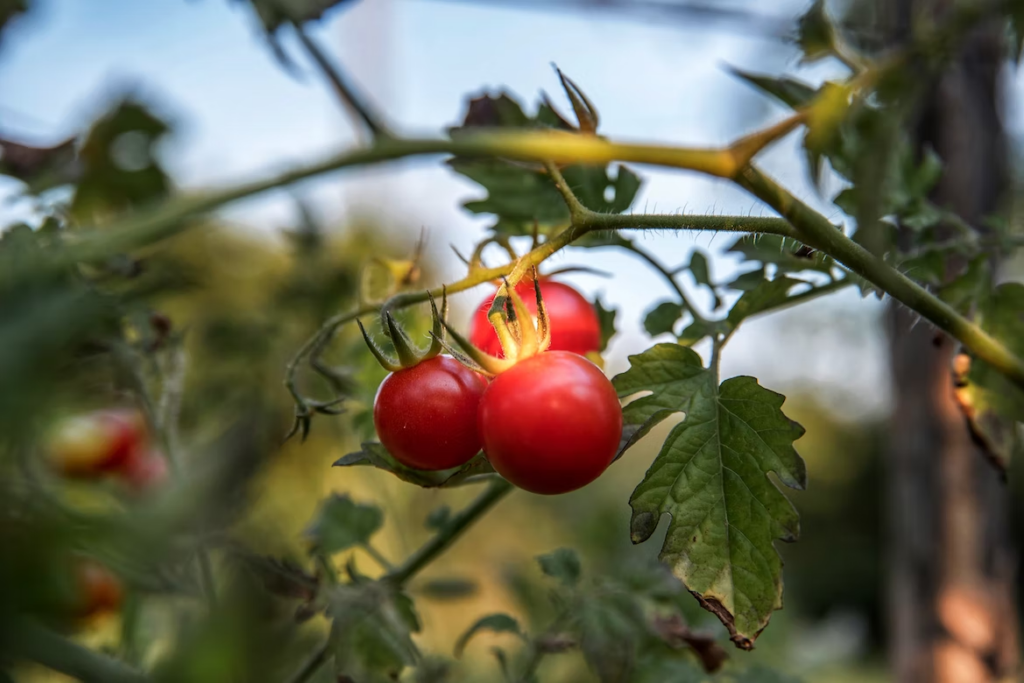
When growing tomatoes, the ideal daytime temperature should be between 70 and 85°F or 21 to 30°C. Nighttime temperatures must be around 59 to 68°F or 15 to 20°C.
Since they’re quite sensitive to extreme conditions, avoid temperatures over 90°F or 32°C during the day and lower than 50°F or 10°C at night.
The best temperature for germinating tomato seeds is around 70°F to 80°F or 21°C to 27°C.
Once the seedlings have sprouted, they tend to favor slightly colder temperatures. In particular, daytime temperatures of anywhere from 65°F to 70°F or 18°C to 21°C and nighttime temperatures of between 60°F to 65°F 15°C to 18°C.

When your tomato plant has begun to grow leaves, roots, and stems, daytime temperatures of 70°F to 75°F or 21°C to 24°C and nighttime temperatures of 60°F to 65°F or 15°C to 18°C are ideal.
As fruits start to develop and ripen, temperatures of around 70°F to 85°F or 21°C to 29°C are ideal during the day. Meanwhile, temperatures of 60°F to 70°F or 15°C to 21°C are ideal for night.
| Growth Stage | Ideal Daytime Temperature | Ideal Nighttime Temperature |
| Germination | 70°F to 80°F or 21°C to 27°C | |
| Seedling | 65°F to 70°F or 18°C to 21°C | 60°F to 65°F 15°C to 18°C |
| Vegetative growth | 70°F to 75°F or 21°C to 24°C | 65°F or 15°C to 18°C |
| Fruit set | 70°F to 85°F or 21°C to 29°C | 60°F to 70°F or 15°C to 21°C |
What are the effects of extremely cold temperatures on tomato plants?

Tomato plants’ prolonged exposure to extreme temperatures of 41°F or 5°C and below can cause wilting, stunted growth, foliage discoloration, pitting, and misshapen fruit.
They also develop an increased vulnerability to infections and diseases.
One of the first things you’ll notice about your tomato plant once the temperature drops is leaf damage. The foliage will begin to turn yellow or brown and eventually fall off the plant.
After this, the state of your tomato plant will continue going downhill. This is because your plant can’t do photosynthesis properly with injured leaves.
After a while, you’ll notice that your tomato plant isn’t growing anymore. If it’s bearing any fruit, they’ll get damaged by the freezing temperatures, too.
It’ll appear water-soaked and mushy, just like how our fingers prune up after we’ve spent too long in the pool. Eventually, the tomato’s discoloration will worsen and it’ll turn black.
Without proper intervention, your tomato plant will die because they’re sensitive to temperatures below 55°F or 12°C. You can expect that the colder the temperatures get, the worse it’ll be for your tomato plant.
| Temperature | Effects on plant and fruits |
| Above 95°F or 35°C | Diminishing fruit set |
| Around 65 to 80°F or 18.5 to 26.5°C | Ideal for fruit development |
| Below 55°F or 13°C | • Wilted and discolored foliage • Misshapen fruits |
| Below 50°F or 10°C | • Inferior fruit sets • Decreased pollen production |
| Below 40°For 4.4°C | • Reduced vigor • Increased susceptibility to diseases • Stunted growth • Wilted and discolored foliage |
At what temperature should I cover my tomato plants?
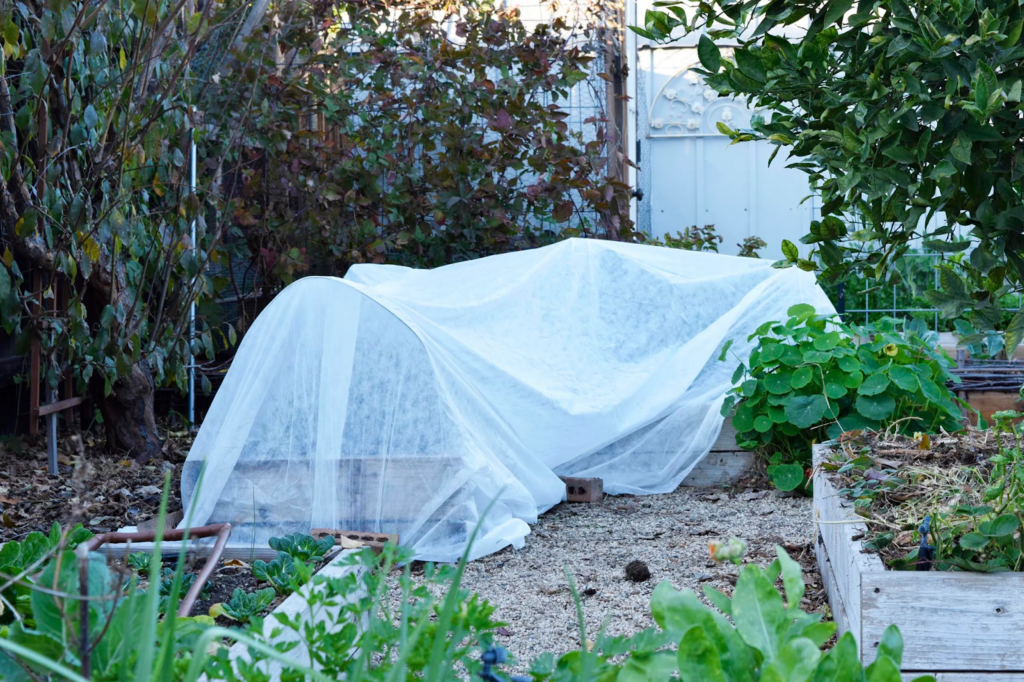
You should cover your tomato plants once temperatures are below 55°F or 13°C. Prolonged exposure could worsen the injuries to your plant, from leaf damage to misshapen fruits.
Even then, keep in mind that a row cover doesn’t offer too much protection. At most, it provides protection of only 3 to 5 degrees, which means they aren’t ideal for the long term.
If you’re expecting extended periods of cold weather, we suggest adding several more protective measures to keep your tomato plants warm.
How do I protect my tomato plants from cold and frost?
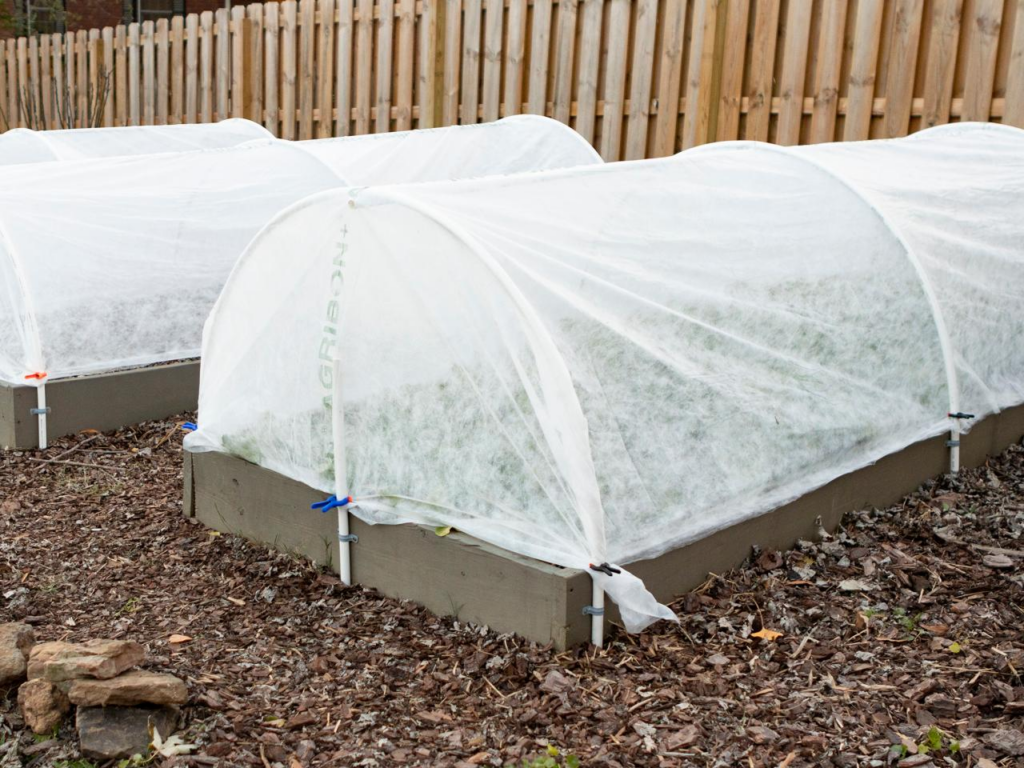
You can protect your tomato plants from the harsh cold and frost by sowing your seeds inside after the last spring frost in your area.
Transplant when temperatures are ideal, around 60°F or 15.5°C or higher, and the soil is warm. If possible, grow them in a closed area or provide covering and insulation to trap heat.
1. Sow your seeds after the last spring frost.

Spring frost, also called ‘late frost’ or ‘black frost’ is exactly what it sounds like. It’s a phenomenon when temperatures drop below freezing in the springtime.
Sowing your tomato seeds before the last spring frost date is quite risky because tomato plants don’t fare well in low temperatures.
Without ideal growing conditions, you can expect several problems with the development of your tomato plant. This includes poor root development and stunted growth, among others.
As warm-season crops, tomatoes are highly sensitive to cold temperatures. Hence, it isn’t ideal to sow them until after the last spring frost date.
At this time, the ground and soil have already warmed up nicely, making it an inviting home for your tomato plant.
This also boosts the chances of your tomato plant developing healthily throughout the rest of the growing season.
2. Start sowing seeds indoors.

It’s sowing 101 to grow your seeds indoors because they need warm weather to germinate. It’s easier to control the temperature indoors, which ensures that they get a headstart on the growing season.
In certain parts of the world, early spring is still too cold to germinate seeds. Hence, sowing them indoors is the next best alternative because it allows you to easily adjust their growing conditions.
If it’s too cold, you can raise the temperature of your heating. Alternatively, you can place your seeds in an area of the home that’s warmer than the rest, such as on top of your refrigerator or next to your heating vent.
Additionally, you can use tools such as heat mats or blankets to consistently keep your seedling tray warm.
3. Closely monitor the weather conditions before transplanting.

You can’t just move your seedlings outdoors willy-nilly! The purpose of closely monitoring your local weather conditions before transplanting is to see if temperatures are ideal for your tomato plant.
If you move your plant outdoors in poor weather conditions such as extreme heat or cold, strong winds, and torrential rain, this could bring about a ton of stress on your plant.
Apart from that, several days of bad weather will make it difficult for your plant to grow and develop properly.
For example, if you transplant during a heatwave it’s likely that your tomato seedling will experience sunscalding, wilting, and dehydration.
On the other hand, if you transplant during a storm, chances are your soil will become waterlogged and your tomato seedling will suffer from root rot.
4. Perform cold treatment to harden off tomato seedlings.
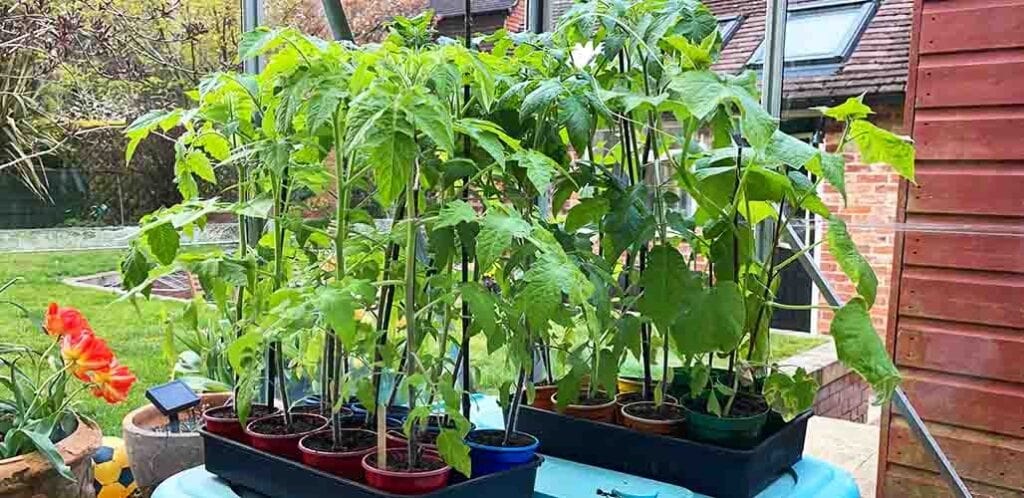
If this seems rather cold of you to do to your young seedlings, well, it literally is. Don’t worry, though, as you can simply think of it as the tough love approach.
Cold treatments are meant to harden off tomato seedlings. This is done by progressively leaving them out in the cold for a week or two depending on the weather conditions.
So for Day #1 you leave your tomato seedling out for an hour, then on Day #2 for two hours, then on Day #3 for three hours, and so on until you can leave it out overnight.
You can start cold treatments on seedlings that have already sprouted their first set of true leaves. Otherwise, you’ll need to wait until they’re ready for the big outdoors.
To do this successfully, you need to be patient and start slowly raising exposure. Leaving your tomato seedlings out in the cold too soon for too long will kill it.
You’ll want to monitor their progress, too. If one seedling doesn’t seem to be holding up as well as the others, lessen its cold exposure until you can start progressing again.
5. Use a cold frame.
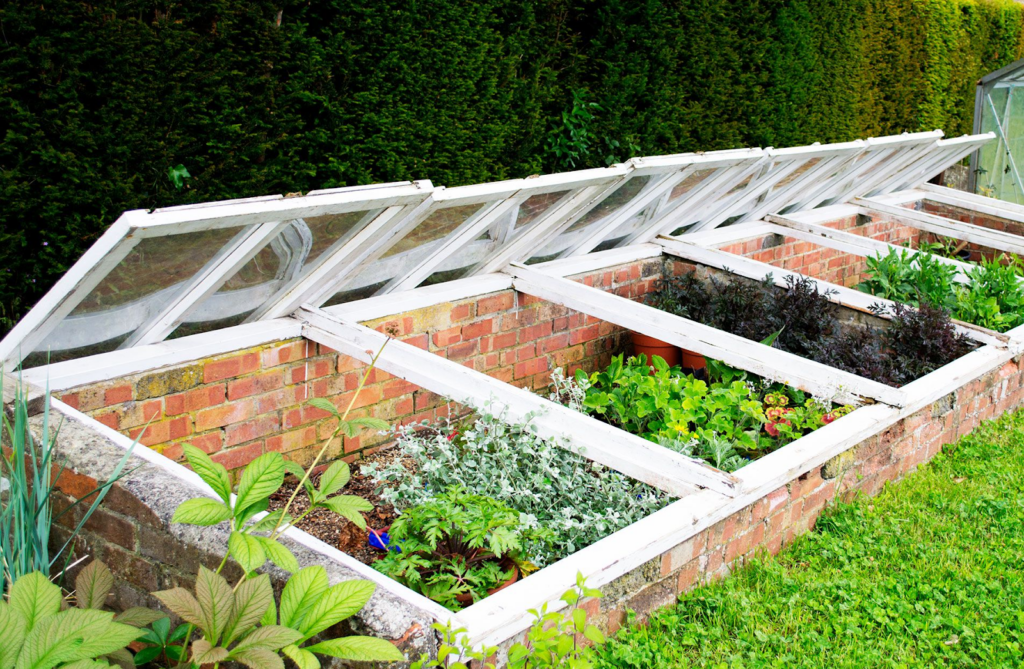
Contrary to what they’re called, cold frames don’t actually keep your plants cold. They’re meant to protect them from harsh weather conditions, keeping them nice and warm.
They’re usually bottomless, which means that you’re still growing plants on the ground. They have a clear top that’s either made of glass or plastic, which allows sunlight to pass through and warm up the soil inside.
Cold frames are historical greenhouses because they’re cost-effective and don’t need electricity to run. They solely rely on solar energy to insulate themselves.
Gardeners can use cold frames any time of the year. You can use it in the springtime to start sowing seeds or even for hardening off plants before transplanting them outdoors.
They can also be used in the fall or winter to prolong the growing season. The cold frames will keep your plant warm enough to last as long as possible.
6. Use a greenhouse.
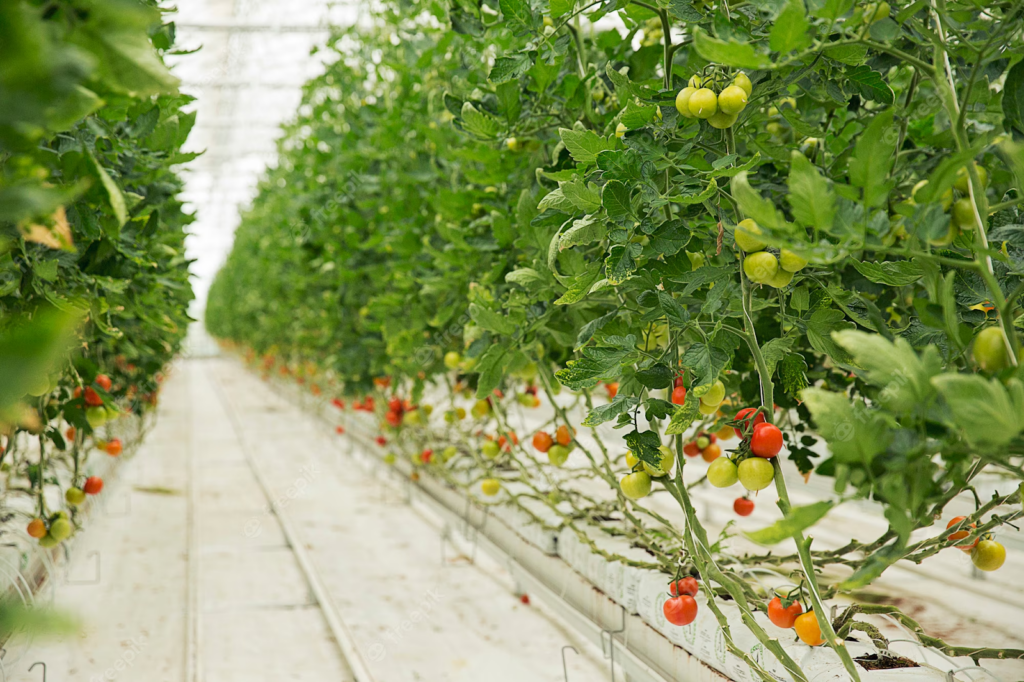
A greenhouse is another controlled environment that’s ideal for growing warm-season crops like tomatoes in cold climates.
Since you can change the temperature, humidity, and light levels any time you like, greenhouses are great for growing tomatoes in all stages, from sowing to harvesting.
Since they can protect your tomato plants from harsh weather conditions outside, especially during the wintertime, they can lengthen your growing season.
When using a greenhouse, you also have the option to grow your plants in any container you like, depending on how much space you have.
Another advantage to using a greenhouse is that it can protect your plants from pests, diseases, and bacteria outside as it acts as a physical barrier.
7. Use cloches.

If you’re on the hunt for a budget-friendly alternative to protecting your tomato plants from the harsh cold, then cloches may be the answer.
Cloches are protective covers that are usually made out of clear plastic or glass in all shapes and sizes.
They usually come in bell and dome shapes, hence they’re great for covering individual plants. This also makes cloches a popular choice among gardeners that have limited space to work with.
They work by trapping heat and humidity, creating a microclimate for the plants inside. Cloches work similarly to cold frames and greenhouses, protecting the plants from the harsh weather outside.
Because of this, cloches are ideal for starting seeds or even hardening off young seedlings before they’re transplanted. Cloches can also be used to extend the growing season as temperatures begin to lower.
8. Use row covers.
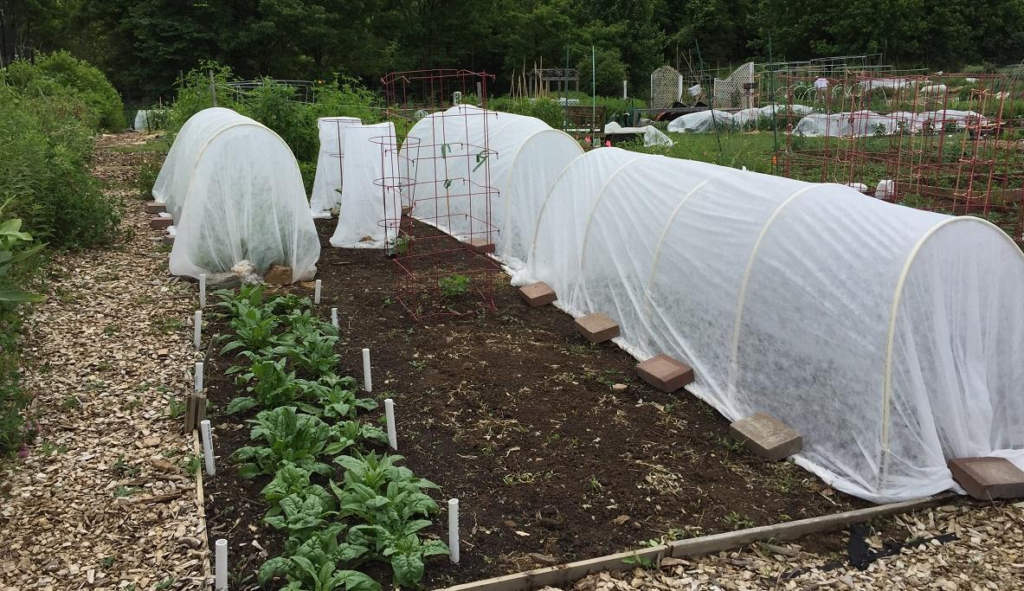
Row covers are a great way to protect entire rows of plants because they act as a physical barrier, protecting your tomato plant from the cold and wind.
By trapping heat and warmth, they can create a microclimate that regulates the temperature inside. As a result, your plant won’t get stressed out as the conditions inside remain consistent.
Another great thing about row covers is that they’re typically made of lightweight and breathable material. Hence, light, water, and air can easily pass through.
This also prevents any pests, bacteria, and fungi from attacking your plants, keeping yields healthy and safe.
Though keep in mind that row covers only provide protection of about 3 to 5°F. So if temperatures continue to drop, you’ll need additional sources of heat to keep your plants warm.
9. Add mulch for insulation.

Adding mulch on top of your soil provides insulation, regulating the temperature by reducing how quickly the soil gets cold.
Mulch helps retain moisture in the soil, which traps and retains heat. As a result, the soil is warmer for longer.
Though, don’t overdo it. While wet soil does have a higher heat capacity than dry soil, excess water can freeze if temperatures are cold enough.
Keep in mind that soil that’s dry gets colder faster because it has a lower heat capacity. Hence, it can freeze faster, which is detrimental to plant roots.
Luckily, mulch isn’t too hard to find. It’s relatively cheap and in some cases completely free, too! Here are a couple of good mulch options that are effective insulators:
- Straw
- Dried or shredded leaves
- Pine needles
- Hay
- Wood chips
What are cold hardy tomato plant varieties?
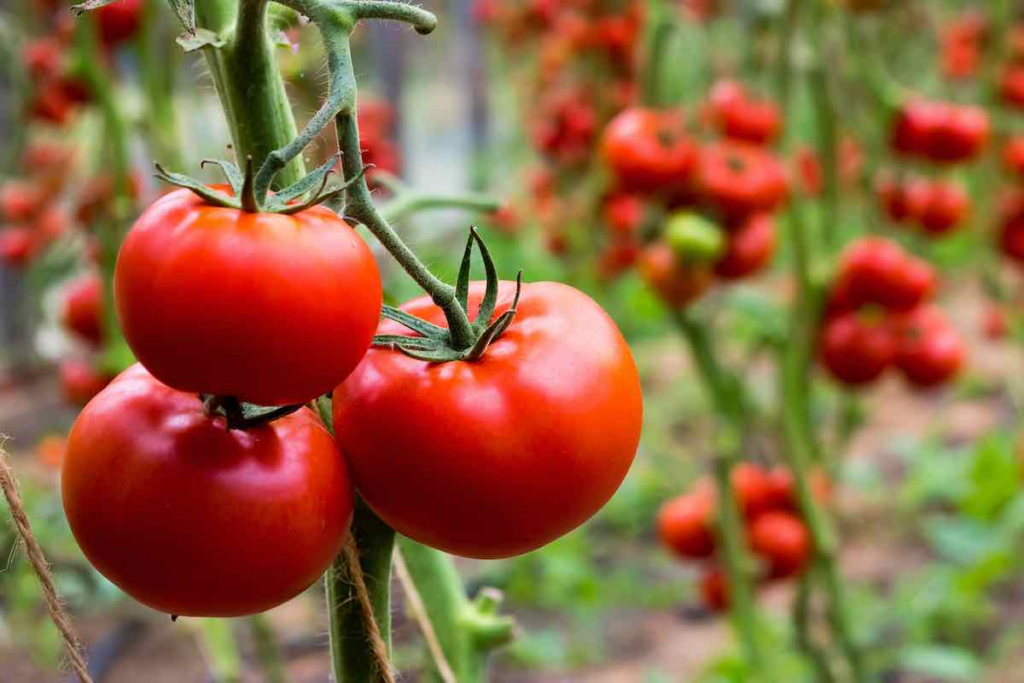
Some of the most popular tomato varieties for cooler climates are:
- Glacier
- Sub-Arctic Plenty
- Yellow Pear
- Stupice
- Siberian
- Winterkeeper
- Princess
- Manitoba
- Polar Star
- Mountain Delight
If you live in a region that experiences colder temperatures all year ‘round, you’re better off planting cold hardy tomato varieties.
This is because they’re bred to be able to handle lower temperatures and shorter growing seasons.
This also works great for areas that experience summers that are too short or cold for regular tomato varieties.
Luckily, you can easily get around this by planting cold hardy or short-season tomato varieties.
FAQs
If your tomato plant is stressed by the cold temperatures, the first things you’ll notice are stunted growth, discolored leaves, and decreased fruit production.
As the temperatures lower, you’ll notice the foliage beginning to curl up or droop, then eventually the entire plant will wilt. Prolonged exposure to extreme cold will kill your plant.
It’s possible for tomato plants to survive mild winters if there’s enough protection from the cold. They’ll also need enough heating and insulation to stay alive.
Even then, tomato plants are warm-season crops that are sensitive to cold temperatures. They’re also grown as annuals, which means that their life cycle is completed within a single growing season.
Apart from mulch and protective covering, you can utilize old blankets, sheets, and clothes as insulation for your tomato plants.
Tomato plants begin to experience stress when they’re exposed too long to temperatures dropping to 50°F or 10°C and below.




